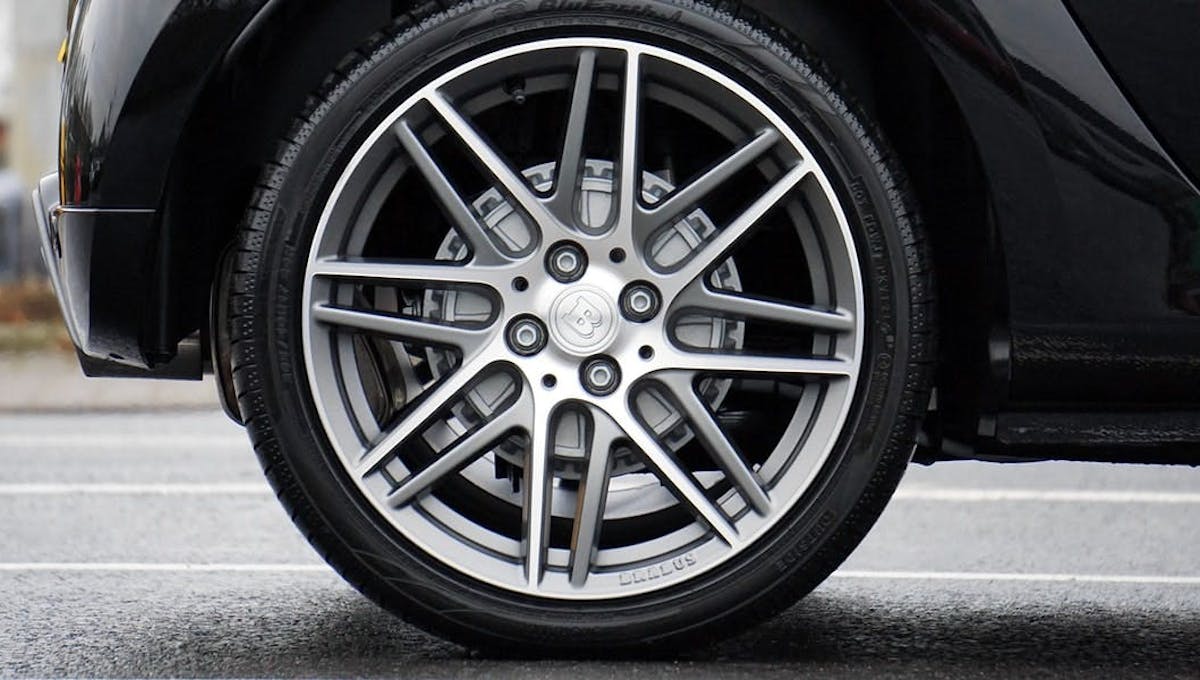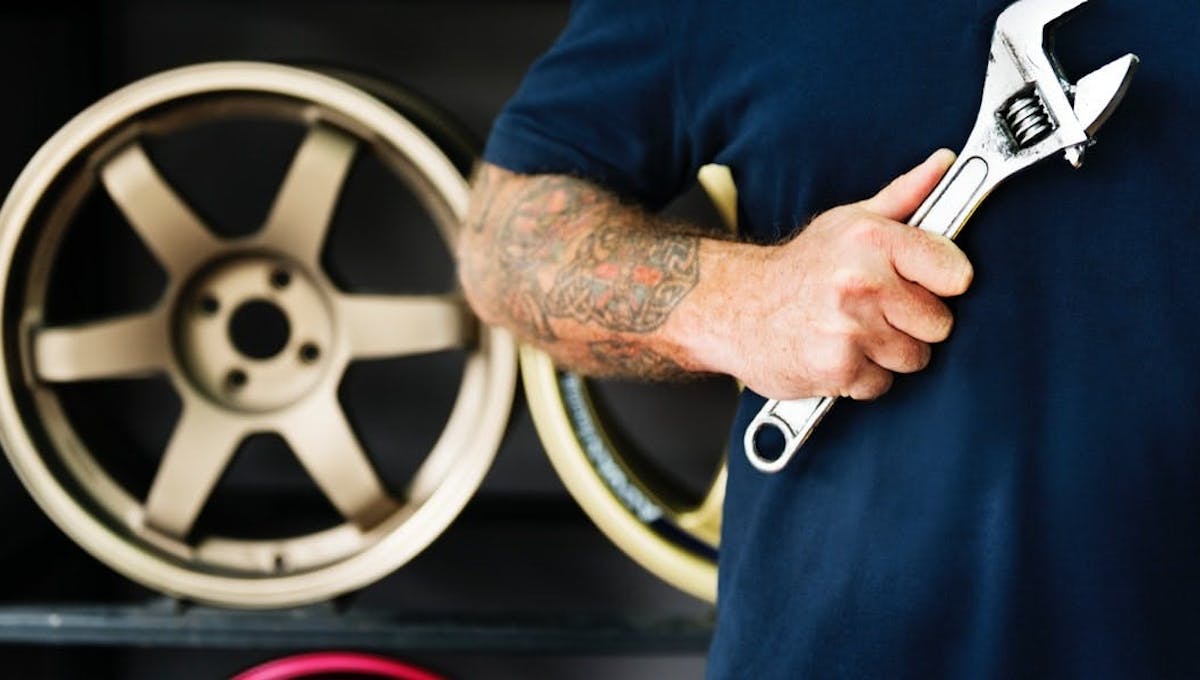How To Check Brake Pads: A Beginner's Guide
Imagine this. You're dashing down the motorway, radio blaring. Suddenly, up ahead, the traffic begins to grind to a halt. You're already pretty close behind the car in front of you, so you slam on the brakes. But you barely slow down.
You're panicking. Your foot is right down on the pedal and if you push any harder, you're going to stamp your shoes right through the bottom of the car. Why isn't your car coming to a halt?
Finally, inches away from the car in front, your car finally stops. The guy in front is waving his fist at you in the rear mirror, his face bright pink and with almost as much sweat on his brow as you have. You sink down in your seat, dabbing your face with your sleeve. What's up with these brakes? Next time you might not have such a lucky escape.
The core of the problem might be your brake pads. Having properly functioning brake pads is essential for running an effective braking system, giving you full and proper stopping power in your time of need. You should be checking your them on a semi-regular basis to avoid these scary situations. Learning how to check brake pads are in good nick is an essential skill every motorist should have.
It's not too tricky to check if your brake pads are a little worse for wear. We've compiled this tutorial to guide you through the process of giving them a look over before taking them to a mechanic to do the rest of the dirty work. Another task to tick of your car maintenance checklist!
What are your brake pads?
We don't claim to be car mechanics, but we've got enough personal experience and Google image research skills to explain to you what brake pads are and how they fit into the wider car braking system.
In your typical brake system, you've got a few main interconnected parts. At the centre, you’ve got a big round brake disc. On either side of the brake disc, you have two brake pads which are held tightly on with the brake caliper. When you hit the brake pedal, hydraulic fluid is whooshed through the caliper via pistons, causing the brake pads to press tightly against the brake discs. This creates friction which slows and stops the car.
It sounds pretty simple but it's important that all the pieces are in good working order to work efficiently. Brake failure is definitely not something you want to be dealing with - you'll receive an instant MOT fail at best, a major car crash at worst.

How to check brake pads
There are loads of ways you can check your car brake pads yourself. You don't need to rush to the repair shop as soon as you suspect a problem. It is something you should always do as part of your pre MOT check. Here are some ways you can give your car a check before you splash out on a consultation and repairs.
Give them a listen
You don't necessarily need to hoist your car up like they do at your local garage to take a look at the brake pads. There are a few tell-tale signs you can simply listen out for.
Your brakes have a wear indicator installed which will let you know when the brake is worn and needing replaced. When you've got a real brake pad wear problem, your brakes will let out a lovely, high-pitched squealing or screeching sound, not unlike an angry pig.
It might also make a nasty grinding noise which indicates that the brake pad material has begun to completely wear down to the metal. If you leave this for too long, it'll create so much friction that it can catch fire while you're driving.
So, if every time you hit the brakes they let out farm animal noises, you know what the problem is.
How do they feel?
Push down on the brake pedal. If you need to stamp really hard before the car starts coming to a halt, then you should get them checked out.
You should be able to brake your vehicle with ease, so if you're having to give your calf muscles a serious workout when you want to slow down, it's time to head to the mechanic.
Similarly, if you brake and you feel a vibration jittering up through the brake pedal and steering wheel, this isn't a sign of healthy brakes.
What is your steering like?
When you break, try monitoring the braking balance across the four wheels. If the car pulls to one side, it's a sign that a brake pad on one side might be worn more than the others. Not all of your brakes will bite the dust at the same time, so this is something to be conscious of.
If you notice this happening, check it's not an issue with the tyres themselves by examining their tread depth and pressure level.
Check your dashboard
Some cars are hooked up with wear sensors that will flash a warning light on your dashboard when your brake pads have worn past the minimum level.
This is very helpful, saving you from trying out all these tests on your car. But you might want to give them a bash anyway, just to be sure.
Do a visual check
If you want to give your brakes a visual look over yourself, it's not too tricky.
First off, you'll want to leave the car brakes to cool or you'll be making a swift trip to A&E! Leave them alone for at least an hour after driving. While you're waiting on them to chill out, you can check the brake fluid. If it's pretty dark, this might be causing problems, so freshen this up.
You can also do a spot check for brake dust. It's normal for dust to accumulate in the wheel when you've been braking. This is the material wearing down. When it's clean and dust-free, it's a sign that the brake pad material has worn away, leaving nothing to produce dust from.
During your visual inspection, you're looking to see how worn the brake pads are. In some cars, you can see the brake pads just by getting down on the ground and looking through the wheel spokes. If you can look through the wheel like this, find the caliper and then you'll find the brake pads pressed against the brake disc. Take a look at the brake pad friction material. If it's less than 1/4 inch thick, you've got a problem.
If you can't see through the wheel, you're going to have to put a little extra elbow grease into the examination. Jack up your car and take the wheel off of the rotor. You'll be able to get up close and personal here. Just do the same from here, checking if the brake pad thickness is less than a 1/4 inch. If it is, get in touch with a mechanic.
How long do brake pads last?
There's no hard and fast rule for how long your set of pads will last for. It will depend on:
- The number of miles you've driven. They normally wear out between 25,000 and 60,000 miles.
- How much weight the car is carrying. Are you towing a caravan or boat? How many people are in the car? Do you store a lot in your boot?
- If you're driving in an urban or rural area. Urban driving is far more stop-start than rural, which makes more use of your brake pads.
A nice rule to keep in mind is the "12/12" rule. Has it been 12 months or more since you last had your brakes checked out by a pro? Or have you driven 12,000 miles since they were last inspected? If so, and you're experiencing some braking problems, it's worth going to see your local mechanic.
Your front brakes are more likely to need replaced than your rear brakes because the front wheels are tasked with most of the braking load.
How much does a brake pad replacement cost?
Again, we can't give you a clear cut figure for how much a brake pad replacement costs. We can assure you, however, that the brake pads are the least expensive part of the braking system to replace. In fact, the rate for labour will often cost more than the actual part.
The cost of new brake pads will vary from car to car, depending on how common your car model is.
Even if you're trying to shave a little money off of your car maintenance bill, we advise that you don't try to install your new set of brake pads yourself, unless you're familiar with the ins and outs of car mechanics (which we assume you're not if you're reading this blog). If you take it to a professional repair shop, it reduces the risk that they'll be fitted incorrectly, which will cause further (pricey) damage.

How do I make my brake pads last longer?
Like any part of your car, if you treat it with care, it'll last longer, slashing your number of mechanic visits and repair bills considerably. There are a few things you can do to prolong the life of your braking system:
- Be aware of upcoming traffic. If you anticipate braking, you won't suddenly slam on the brakes, which wears them down quicker.
- Don't load up the boot for your trips if you don't need to. The extra weight puts more pressure on the brakes.
- Drive sensibly - don't get in the habit of accelerating rapidly and braking suddenly. Stick to the limit.
- Get your car serviced regularly - read up on the types of car service, what a car service includes, and how often to get your car serviced.
Overall, checking your brake pads is fairly straightforward and there's loads of methods for you to choose from. If you do have any problems, it's best to seek out a professional mechanic to fix it all up for you.
If you're on a roll ticking off items on your car maintenance checklist, check out these car maintenance tips from the experts and consider downloading one of these car maintenance apps! We've also created guides for some maintenance jobs, like how to check tyre pressure.


